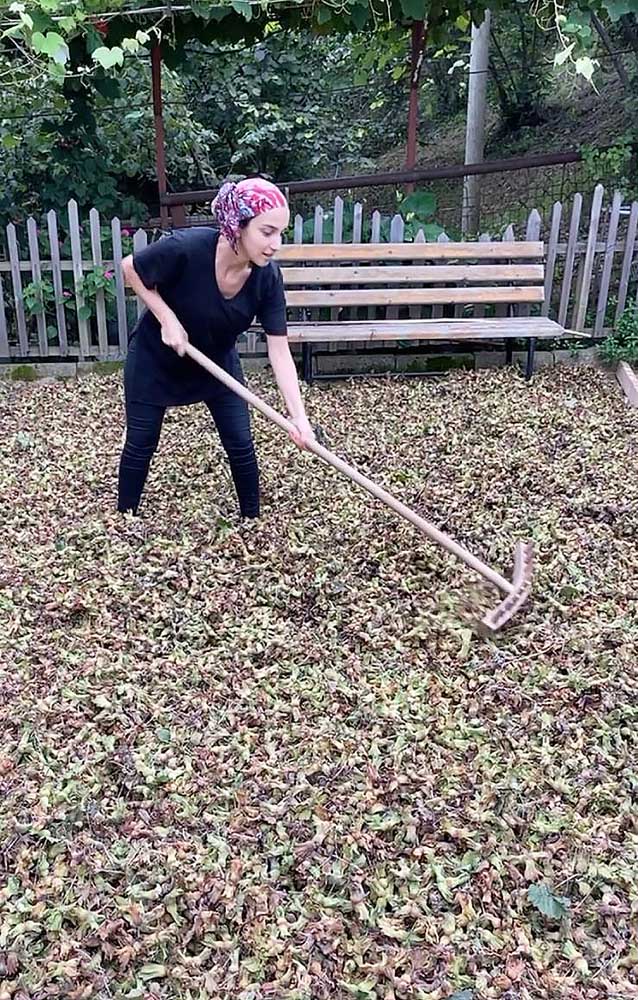Turkish turmoil continues to undermine hazelnut prices
Published 9:00 am Thursday, July 20, 2023

- Elif Kaya rakes a bed of hazelnuts laid out to dry during the summer harvest in Dokuztepe village, in Giresun province, northeastern Turkey.
Turkey’s currency has continued to devalue after upending hazelnut prices last year, which experts see as a disquieting though not necessarily disastrous omen for 2023’s harvest.
Trending
“We’ve hit rock bottom and we expect a two to three year dig-out of this hole to get back to profitable prices,” said Larry George, president of the George Packing Co., a major Oregon processor.
As the crop’s foremost global producer, Turkey has influence on hazelnut orchards across the world, including more than 6,000 miles away in Oregon’s Willamette Valley.
Low prices for Turkish hazelnuts tend to depress markets across major growing regions, which is why the country’s currency affects farmers who’ve never even glimpsed its pastel-colored lire banknotes.
Trending
As lire drops, so do prices
As the Turkish lire becomes less valuable against the dollar or the euro, so do Turkish hazelnuts and other exports from that country.
The lire’s value against the dollar and euro fell roughly 50% in the year preceding the 2022 hazelnut harvest, contributing to the plunge in Oregon’s initial prices to 40-53 cents per pound, from about 80-90 cents the previous year.
Since then, the lire has fallen more than 30% against the dollar and 40% against the euro, likely aggravating the price-suppressing effects of what’s expected to be the third large Turkish harvest in a row.
“We still have plenty of headwinds going into this market season,” said Terry Ross, executive director of the Hazelnut Growers Bargaining Association, which negotiates with processors on pricing.
Oregon acreage up
Farmers were inspired to plant hazelnut trees while earning decent returns on the crop, which saw its Oregon acreage roughly triple to 90,000 acres over the past decade, but they may now hit the brakes.
Growers will be less likely to replace aging hazelnut orchards if low prices persist and may even tear out relatively new ones, particularly if they’re planted with unsuitable varieties, he said.
“I believe planting will slow down dramatically if we don’t see significant improvement within two years,” Ross said.
The upside of low prices for farmers is that hazelnuts cost less for consumers and food manufacturers, hopefully whetting their appetites for the crop longer-term, he said.
Aggressive price-cutting by some hazelnut wholesalers increased shipments to China despite the tariffs imposed by the country, he said.
“The price was so reasonable, it overcame many obstacles,” Ross said.
Domestic buyers are also more likely to incorporate hazelnuts into products when they’re less expensive, he said. “We hope we have built out some new markets with last year’s affordable pricing.”
Manufacturers had pared back their product lines in the wake of the coronavirus pandemic, hurting hazelnut sales, which previously seemed to be on an upward trajectory, George said.
“COVID hit and we flatlined,” he said, adding that demand for hazelnuts has now revived. “We’re seeing normalization of the market.”
Last year’s hazelnut prices were also hurt by substantial leftover inventories from the previous season, George said. That’s not a problem in 2023, which will probably bump up initial prices during the autumn harvest.
“It appears the market is really clear,” he said.
The devaluation of the Turkish lire will probably have less of an impact as well, since farmers in that country have felt more affected by rising costs for fuel and fertilizer, George said.
Most of their biggest expenses preceded the Turkish lire’s steep decline, so the currency’s lower value wasn’t immediately alarming, he said.
Since then, however, Turkish farmers have felt the effects of more expensive imported farm inputs and are demanding better compensation, George said. The country’s numerous growers are a powerful political and marketing force that government officials and manufacturers can’t ignore.
“There’s a delayed reaction when your currency’s devalued,” he said. “If the Turkish farmer is more engaged in the world market, they will demand a higher price.”
Devalued currency can play a role in hazelnut markets but isn’t the most consequential determinant of price, said Resul Cesur, an economist at the University of Connecticut who is originally from Turkey.
For example, the cheap lire can exacerbate low prices if Turkish hazelnut production is high, but it wouldn’t totally override the price-boosting impacts of a short crop.
Despite rapid inflation, Turkey’s government leaders were reluctant to raise interest rates, he said. They also spent massive amounts of money to goose the economy and remain in power before a recent election, Cesur said.
But they’ve now reversed course and appointed financial officials with a conservative fiscal approach, he said.
“The outlook now is that after the election, they realized they could not continue this,” Cesur said. “That’s a signal to the world: We will stick to conventional policies.”
In the next two years or so, this strategy is likely to stabilize Turkey’s currency and promote economic growth — unless the leadership ditches it to placate a restive populace, he said.
However, Cesur said the government is under heavy pressure to get inflation and its fiscal situation under control.
“They are risking a huge financial crisis and that would be dangerous,” he said.







